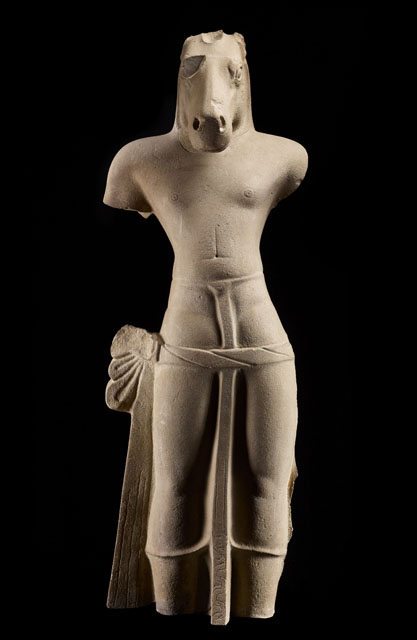Jyoti Jha, Megha Gupta and 62 others like it on FB Lassi with Lavina page
2190 people reached on FB Lassi with Lavina page

Behind the Scenes: The Met’s India Connection
[dropcap]R[/dropcap]ecently the Metropolitan Museum of Art came to India House, the Indian Consulate in New York. Several members of the curatorial staff met the Indian community over cocktails. Thomas P. Campbell, Director and CEO of The Metropolitan Museum of Art, announced that The Met and the Ministry of Culture of the Government of India have reaffirmed their long-term cooperative relationship through a Memorandum of Understanding (MOU), which renews for five additional years the two-way partnerships for sharing knowledge and expertise that have been established between the Museum and cultural institutions in India. (The MOU was signed in June by Shefali Shah, Joint Secretary of the Ministry of Culture, and Mr. Campbell.)
Indeed, the connections between the Metropolitan Museum of Art and India run deep. Art from the Indian sub-continent has been collected by the Metropolitan Museum from 1891 right till the present times and it is one of the most comprehensive collections of Indian art in the western world.
[dropcap]T[/dropcap]o walk through the Met is to encounter every period of Indian history: The holdings of the Department of Asian Art include early, classical, and medieval sculpture, Hindu court (Rajput and Pahari) painting, and court and trade textiles. The Indian collection consists of some 1,250 works of art, of which around 350 are on view in the nine Herbert and Florence Irving Galleries of South Asian Art, the most extensive such displays outside of India. Indian art dating from 1500 to 1900 is represented by more than 1,300 pieces in all media in the Department of Islamic Art.
The Arms and Armor Department has rich holdings of Mughal and South Indian arms and armor, including a highly decorated armor of mail and plate from the period of Shah Jahan (dated 1632–33). There are also over 200 musical instruments from India in the Department of Musical Instruments, including rare instruments donated by Indian musicologist Sir Sourindro Mohun Tagore in the late 19th century.

Celebrating art links across continents
[dropcap]A[/dropcap]ll this can be seen by the eye yet there are many back stories of the link between the Met and India and these behind-the-scenes stories are really ones to celebrate because they strengthen the ties between museums in the east and west and share knowledge of excellence.
The Ministry of Culture, Government of India and the Metropolitan Museum of Art, New York signed a Memorandum of Agreement on the Indian Conservation Fellowship Program in 2016. A pilot project was conducted in 2013 to 2016, and its success led to it being renewed for another five years till 2021. Under this agreement The MET will work with Ministry of Culture to impart a broad range of knowledge on modern operations of museums like conservation, and planning of exhibitions.

[dropcap]T[/dropcap]hrough the agreement, the Ministry of Culture and The Met will continue to cooperate in the areas of conservation, exhibitions, academic research, information-sharing, public education, publications, museum management, and short- and long-term loans.
The Indian Conservation Fellowship Program, in particular, has forged important professional relationships between colleagues internationally and has provided critical experience that can be built upon in the future. This is with the support of the Andrew W. Mellon Foundation, providing educational support for museum professionals around the world.
The launch of the next phase of the Indian Conservation Fellowship Program marks the beginning of the new agreement. This major initiative—undertaken beginning in 2012 by The Metropolitan Museum of Art and the Stichting Restauratie Atelier Limburg (SRAL), with the support of the Ministry of Culture of the Government of India and The Andrew W. Mellon Foundation—awards up to seven fellowships a year to conservators currently working in art and cultural heritage museums and institutions in India.

The current phase reinforces and expands upon the program’s goals and essential structure. Two new partners have joined the program: the Royal Institute for Cultural Heritage, Brussels; and the Freer Gallery of Art and Arthur M. Sackler Gallery, The Smithsonian Museums of Asian Art, Washington, D.C
So over the next five years there will be 35 new fellowships; annual seminars and workshops in India; follow-up visits by host supervisors at fellows’ home institutions; visits by the directors of the participating Indian museums to the fellows’ host institutions; and meetings of the advisory committee to organize and plan seminars, workshops, and interviews.
Definitely something to celebrate!
(with additional text from the Metropolitan Museum of Art)


Shiva, Vishnu & Buddha in the Lost kingdoms






